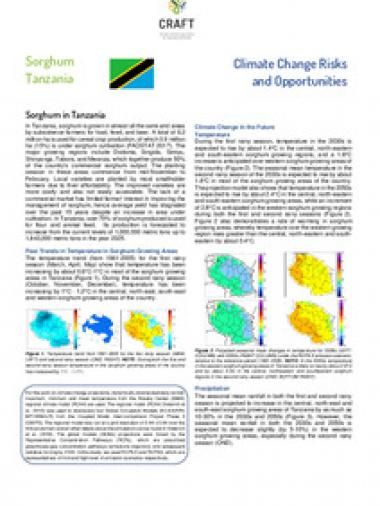Sorghum Tanzania: Climate risk assessment

In Tanzania, sorghum is grown in almost all the semi-arid areas by subsistence farmers for food, feed, and beer. A total of 6.2 million ha is used for cereal crop production, of which 0.9 million ha (15%) is under sorghum cultivation (FAOSTAT 2017). The major growing regions include Dodoma, Singida, Simiyu,
Shinyanga, Tabora, and Mwanza, which together produce 50% of the country's commercial sorghum output. The planting session in these areas commence from mid-November to February. Local varieties are planted by most smallholder farmers due to their affordability. The improved varieties are more costly and also not easily accessible. The lack of a commercial market has limited farmer’ interest in improving the management of sorghum, hence average yield has stagnated over the past 15 years despite an increase in area under cultivation. In Tanzania, over 70% of sorghum produced is used for flour and animal feed. Its production is forecasted to increase from the current levels of 1,000,000 metric tons up to 1,843,000 metric tons in the year 2025.
Citación
Demissie T, Duku C, Groot A, Kabuka G, Recha J, Osumba J. 2020. Sorghum Tanzania: Climate risk assessment. Climate Resilient Agribusiness for Tomorrow (CRAFT).